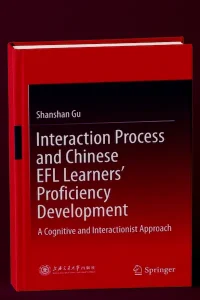If you are looking for a book that provides readers a better understanding of the interaction-learning relationship in the English as a Foreign Language (EFL) context, The Interaction Process, and Chinese EFL Learners’ Proficiency Development book is what you are looking for.
Interaction Process and Chinese EFL Learners’ Proficiency Development
This book provides readers a better understanding of the interaction-learning relationship in the English as a Foreign Language (EFL) context. It introduces theories on input, output, and learners’ internal mechanisms, and presents the pedagogical implications of how to adapt focus-on-form instruction in Chinese EFL classrooms. As such, it will be of particular interest to those readers who want to explore the relationship between interaction and language acquisition.
About this book
The interaction-learning link in the English as a Foreign Language (EFL) environment is better understood in this book. It covers input, output, and internal processes theories, as well as the practical consequences of adapting focus-on-form training in Chinese EFL classrooms. As a result, it will appeal to readers who wish to learn more about the link between interaction and language learning.
Table of contents
- Introduction (Pages 1-6)
- A Cognitive and Interactionist Approach to SLA (Pages 7-32).
- Pespectives on Interaction Process in SLA (Pages 33-55).
- Issues in Research Methodology (Pages 57-70).
- Effects of Interaction Process on EFL Development (Pages 71-112).
- Conclusion and Implications (Pages 113-121).
Book Features
- Adopts a cognitive and interactionist approach to SLA.
- Includes a multi-dimensional study of the interaction process.
- Offers an in-depth discussion of the interaction-learning relationship in the Chinese EFL context.
- Sheds new light on how to adapt focus-on-form instruction through communicative interaction.
- Includes supplementary material.
The interaction-learning link in the context of English as a Foreign Language (EFL) is better understood in this book. It covers input, output, and internal processes theories, as well as the practical consequences of adapting focus-on-form training to Chinese EFL classrooms. As a result, readers who wish to learn more about the connection between interaction and language development will find it particularly interesting.


